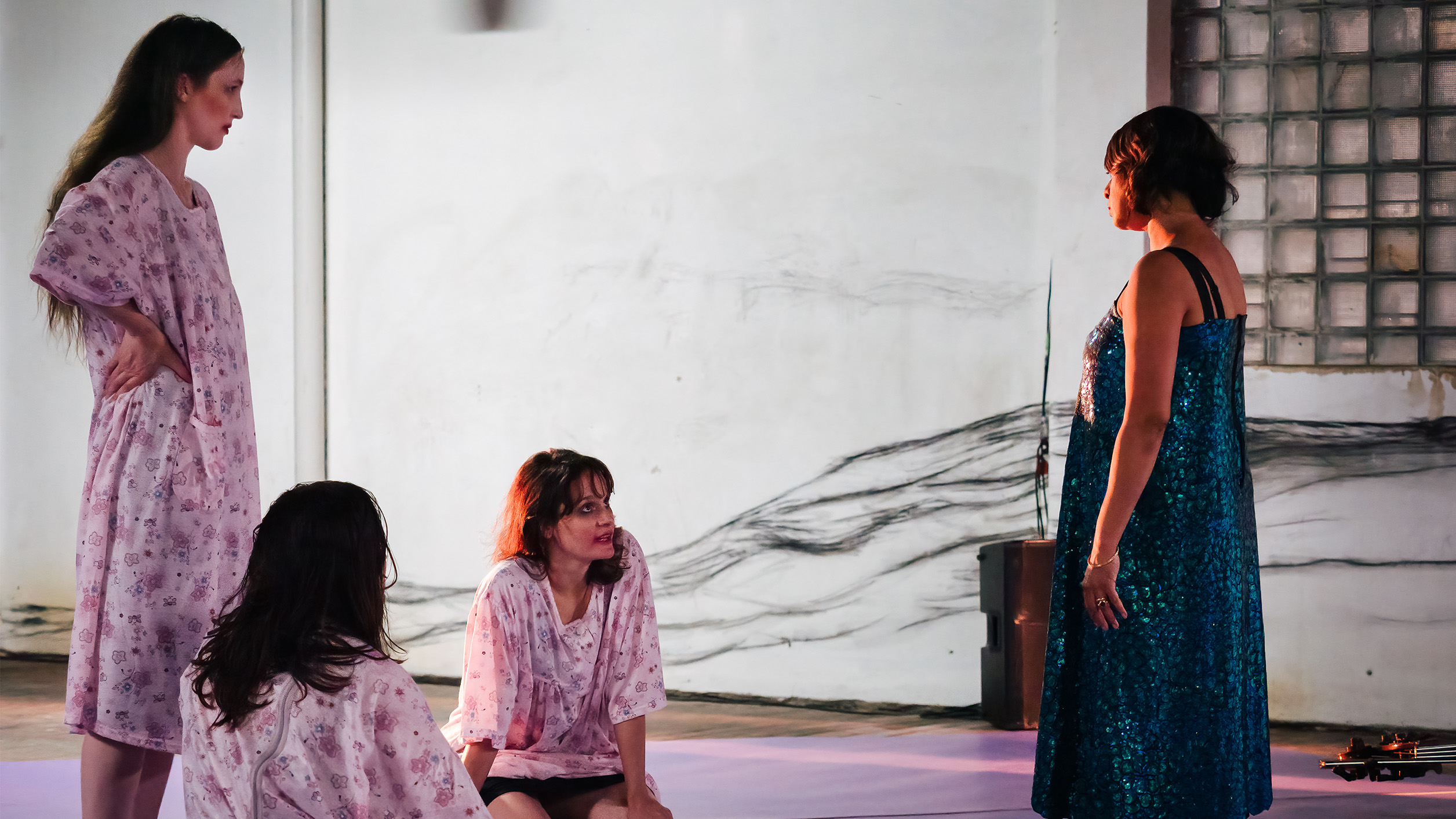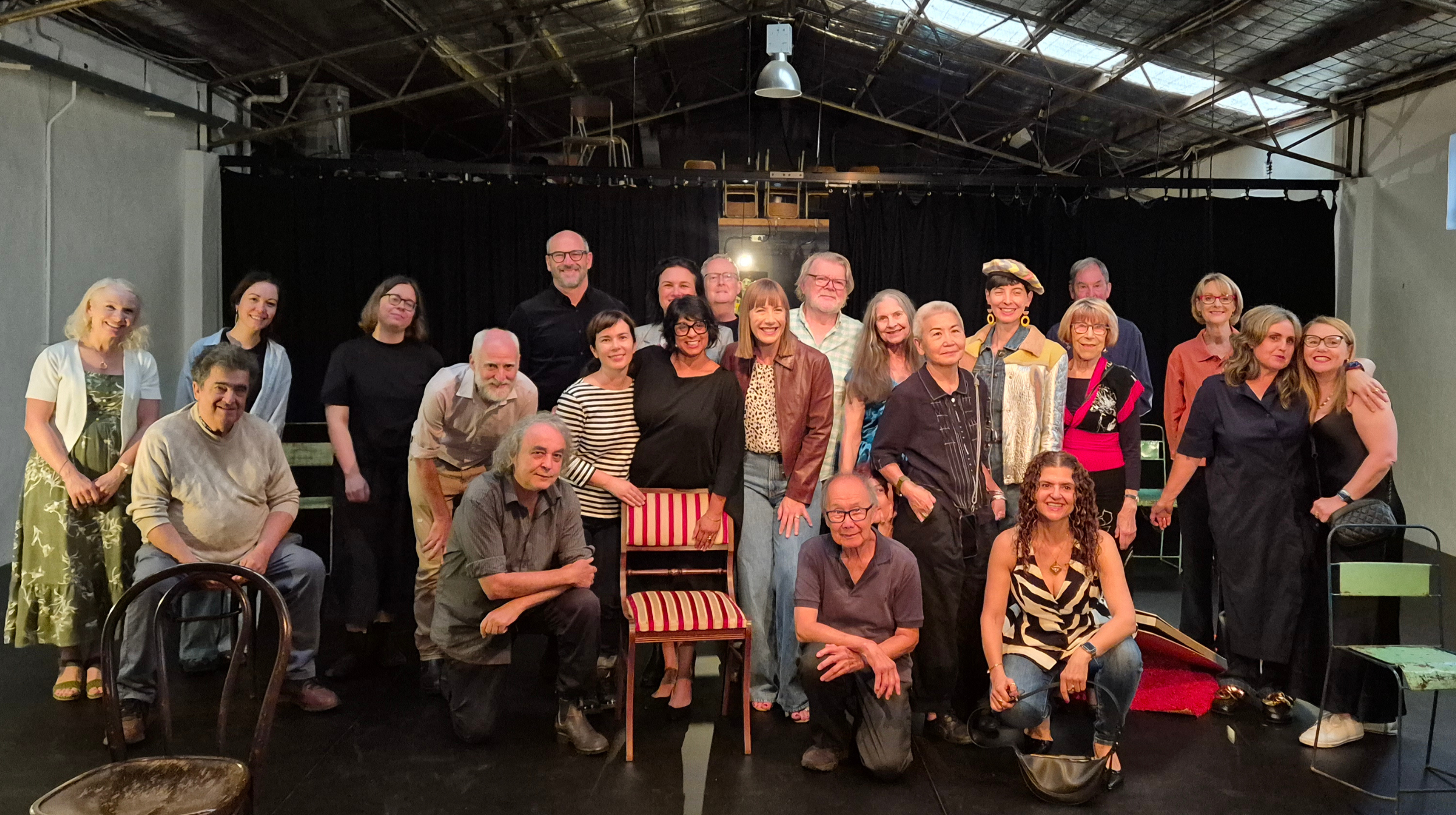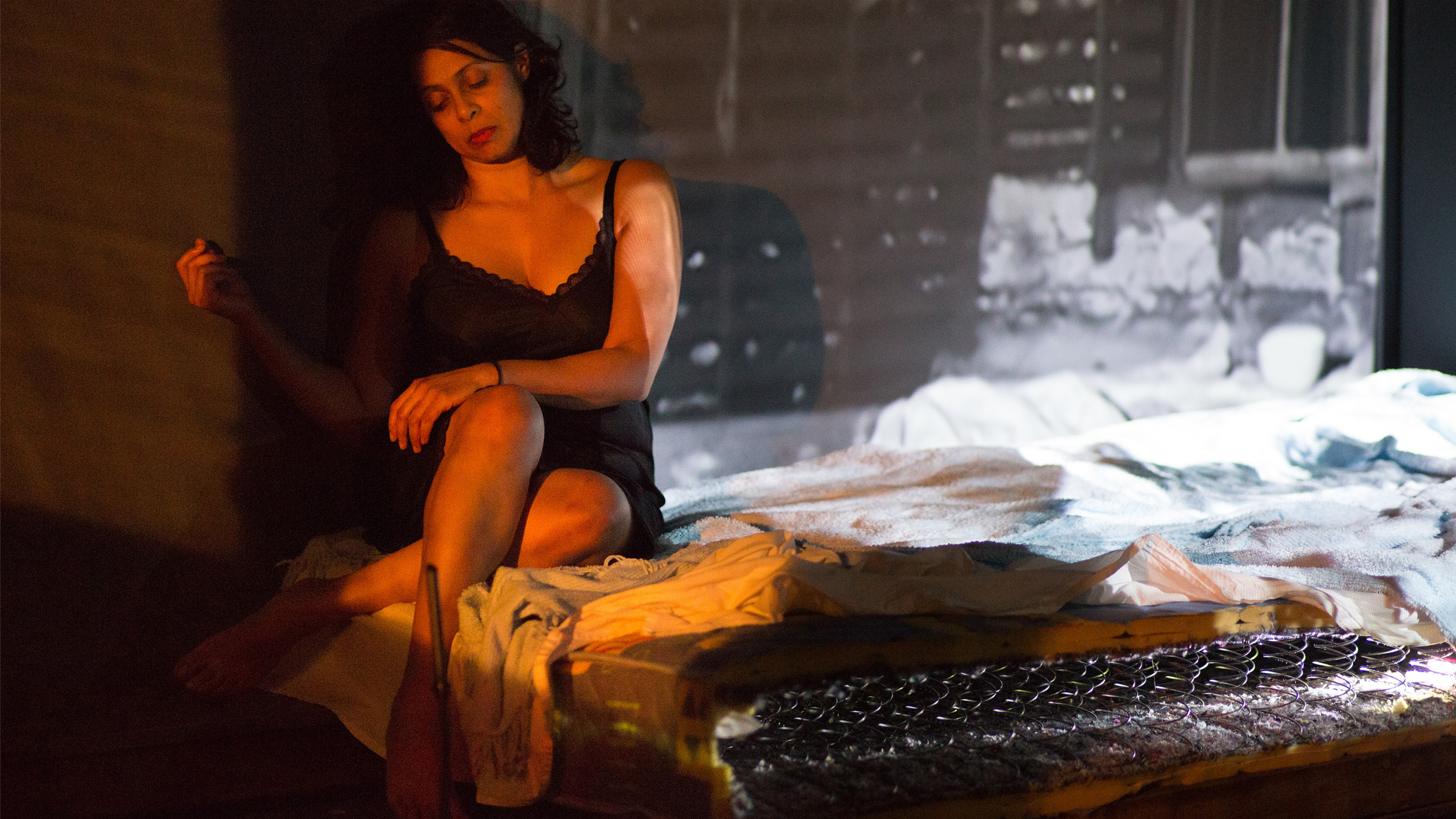
Sites of Violence / Collision and Composition
08.10.2020
Illuminating landscapes of violence in plain sight, Michelle St Anne traces the threads of home, solastagia and the sunlit noir to weave her new theatre work ‘the foul of the air’.
In the second installment of ‘the foul of the air’ theatrical dissection, Michelle St Anne reveals the intricacies of her methodology and its impact on academic approaches. Continued from part one.
Compositions
My current theatrical work, ‘the foul of the air’, is an assemblage of ideas, frustrations, needs and investigations. What holds it all together?
In the past, I have always used music scores as my scaffolding. In particular, the work of Steve Reich and his phasing techniques in which two recordings of the same phrase are layered and gradually fall in and out of sync as one track increases in speed. I have dedicated close to a decade to transposing this technique of sound into image, with attention to how it arrives, is sustained, and depletes. And how does this structure support meaning and its own narrative outside language.
In more recent years, following a residency with German theatre academic Professor David Roesner, I came to be intrigued by Heiner Goebbels work Stifter’s Dinge (Stifter’s things), a play with no actors, a composition for five pianos with no pianists, a performance without performers — a no-man show. Light, pictures, murmurs, sounds, voices, wind and mist, water and ice — these devices usually act as mere props or set pieces, but in Stifter’s Dinge, they become protagonists.
Goebbels’ work is anthropogenic and unapologetically male. This maleness is embedded in the materials, the lines and shapes that comprise his work. I respond to this mesmerising work with my own, as a theatrical visual artist whose palette lies in the corridor of several art forms. Indeed, I delight in collaborations across genre, disciplines and industry.
For over 20 years I have pioneered my own methodology, ‘Composing Self Through Free Play’, inspired by compositional frameworks from music. In this pursuit I have found a larger family in Europe, all of whom follow similar lines of inquiry, and a methodology known as Composed Theatre.
Our aesthetics vary but our compositional thinking is similar. We share a curiosity with phenomena rather than narratives and storylines. I continue to borrow the techniques of Composed Theatre, which include my favourite actor-training exercises that allow space and a cleaned body to access the imagination. For me, my artistry does not come into its own in a general space. Instead, I rely on the elements of architecture, viewpoints and light to support and stimulate the imagination.
The space in practice
In May last year, I hosted an interactive workshop based on ‘free play’ at The Rex Cramphorn Studio, with the intention of exploring these theatrical methodologies with both artists and academics.
Caught within both the theatrical and the academic worlds, I have long been fascinated with the public lecture – its rhythm, its timbre and the frequency of facts. Having worked with scholars over the last five years playing with the coding of the lecture, the workshop’s space of vulnerability allowed for a shift in the dynamics. This time, a group of scholars were peering into this world, a world crafted by performers and musicians.
While the performers were situated in the centre of the Studio with a series of prepared vignettes, the scholars were placed on the periphery of the ‘stage’ with a shared microphone. I gave them two directives: to simply start with stating their name and research interests, and only speak if an image prompted them to.
The vignettes were built on the concepts of the enduring image – an image that lives in the imagination long after the first experience of it.
The improvisation started with just a single light that simply moved across the space to find a resting body on a bed frame. Oddly, the scholars ignored the first directive of announcing themselves and began instead with a memory, the image in the centre compelling them to speak.
As they spoke, the scholars found their words re-engaged as gestures, movement and language repeated back and reinterpreted by the performers. Quite simply, the scholars became the unannounced conductors of the work creating a new timbre within the musical framework. Looping around language and sound; image and body created a seamless interaction between performer and commentator, conductor and player. Here I discovered a new frequency of how to treat the ‘public lecture’ within this canvas, a true intersection between scholarly research and artistic expression.
“[The workshop] …was one of the most inspiring, enriching, and intellectually rejuvenating experiences I have had as an academic. Seeing my thoughts and words translated into movement and hearing how my thinking related to other scholars in various disciplines at the university was just an experience felt like a true example of interdisciplinary engagement. These are the types of intellectually and emotionally challenging experiences I thought I would have more of as an academic, frankly…It has made me think more broadly, of what it means to have intellectual conversations.”
— Megan Mackenzie, Professor of Gender and War, The University of Sydney
The collision
At last, back to the question – what holds it all together? In bringing a disparate assemblage of my ideas, uncertainties, frustrations, and needs to the audience, I seek not their approval but rather their engagement. I ask them to pay attention and to feel, to be present, and to puzzle through it with me. My artistic approach is in all ways collaborative, and this continues to dominate my work life in both theatre and academia.
After engaging in free play, ‘the foul of the air’ began to take shape. Working with Stifter’s Dinge as my blueprint, I have decoded it into a series of maps and coordinates that I will recode with my own elements of actors, musicians, and environmental elements. I will create a home for Charlotte Wood’s characters that is beyond design and imbue space that no longer remains a place of shelter and refuge, but a quiet place for violence in plain sight.
I return to the stories of the home I know best – the home of my childhood – to tell stories of those on the fringes of society, those who are not heard or seen, not reported on or celebrated. Those discarded by society because they are simply unpalatable.
There’s a moment halfway through Charlotte Wood’s The Natural Way of Things when Verla goes for a walk after it has rained. These sensations she is feeling, the sounds that twist in and out of her real and imagined states, is something very powerful. I wonder what she would sound like if she were a riverbed. If the violence she is imagining would be agricultural toxins that seep into its creeks, as it does into her veins. I wonder how the riverbed yearns at the mouth, hearing the sea, the rhythmic crashing of waves. The waves, like Verla’s horse, a carriage out of despair.
What I hope remains from the collision between Wood, Goebbels, and myself is the Stifter’s Dinge experience where, as Goebbels reflects “the audience is at the center of [the] piece — they make sense of what they see and what they hear, in a liberated and individualized way”. By fostering this relationship and empowering the audience, unseen violence becomes seen, building our capacity to stand in its truth rather than in its denial.
This article was edited by Sites of Violence Research Assistant Hannah Della Bosca.
The is article was originally posted by Sydney Environment Institute
It forms part of the Sites of Violence project which merges artistic and academic understandings of human and non-human experiences of violence, and the processes, emotions, and meaning that this violence reveals. This transboundary approach dismantles learned indifference by introducing novel perspectives to old problems, and facilitates productively disruptive collaborations between researchers and artists.
Michelle St Anne is the Artistic Director and founder of The Living Room Theatre. She is an Honorary Associate with the School of Theatre and Performance Studies, School of Literature, Art and Media, The Faculty of Arts and Social Sciences, at the University of Sydney & a member of the Sydney Institute of Criminology.


